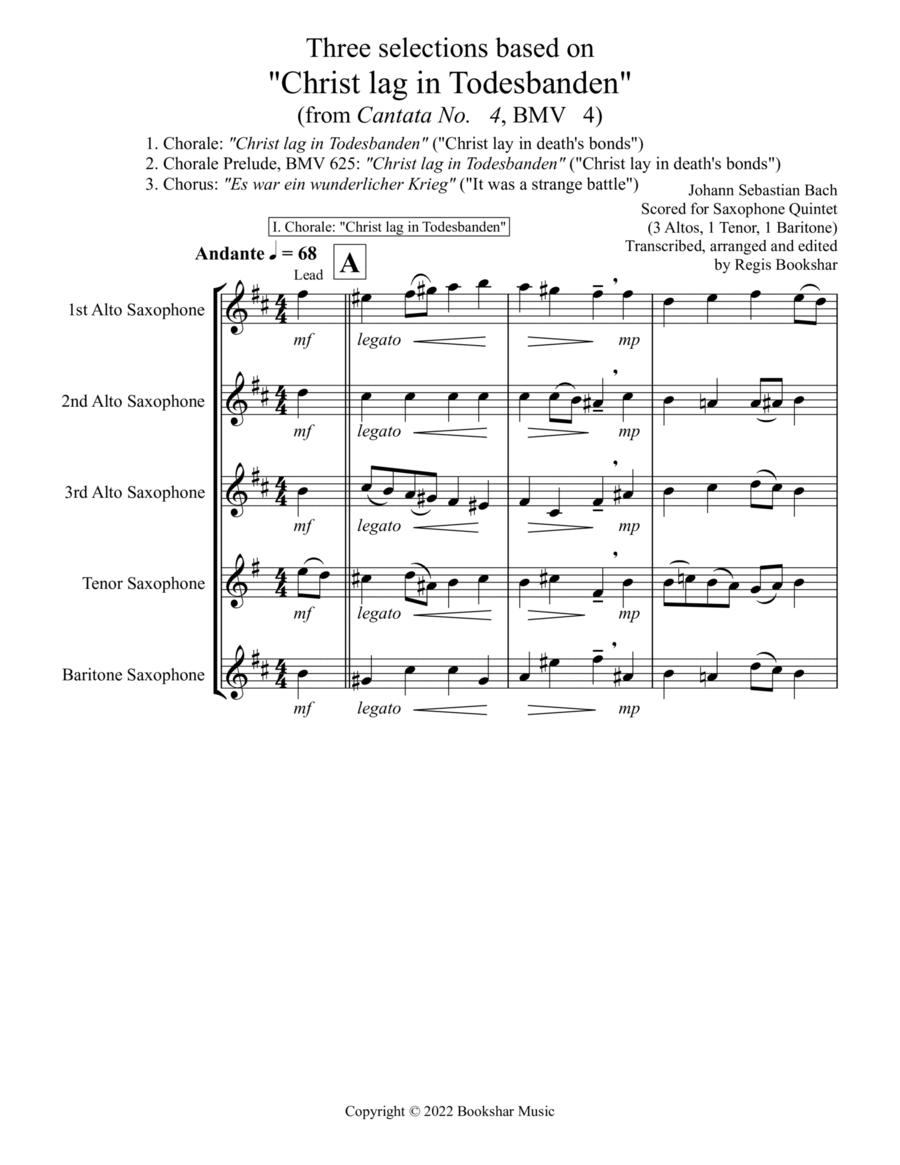Saxophone Quintet,Woodwind Ensemble Alto Saxophone,Baritone Saxophone,Tenor Saxophone - Level 4 - Digital Download SKU: A0.1255304 Composed by Johann Sebastian Bach. Arranged by Regis Bookshar. Baroque,Chamber,Christian,Easter,Historic. 29 pages. Regis Bookshar #848817. Published by Regis Bookshar (A0.1255304). Three selections based on Christ lag in Todsesbanden (Christ lay in death's bonds) (from Cantata No.  4, BMV  4) - Johann Sebastian Bach - Saxophone Quintet (3 Altos, 1 Tenor, 1 Baritone) - Advanced /Intermediate - Digital Download.Cantata No.  4, BMV  4, Christ lag in Todesbanden (also spelled Todes Banden) (Christ lay in death's bonds) is a cantata for Easter written by Johann Sebastian Bach and is his earliest surviving Church Cantata. It was probably written in 1707 when he was 22 years old. It is a Chorale Cantata, a style in which both the text and music are based on a hymn. In this instance, the source was Martin Luther's hymn of the same name which became a main Easter hymn in German Lutheranism.Regis Bookshar has transcribed and arranged three selections based on this hymn tune, two from Bach's Cantata No.  4, BMV  4, and also his Chorale Prelude, BMV 625. They may be played individually or as a trilogy and each movement gets more complex that the previous one. The first selection in this trology is the Chorale, Christ lag in Todesbanden, the final chorus from his Cantata No.  4, a straightforward four-part chorale setting of the hymn (Regis has also added a fifth part). This is followed by Bach's Chorale Prelude, BMV 625, a piece from his Orgelbuchlein (Little Organ Book), a collection of 46 Preludes for organ, written almost exclusively during the 1708-1717 period, while Bach was court organist at Weimar. For the final selection, Regis has placed the polyphonic and imitative chorus, Es war ein wunderlicher Krieg, da Tod und Leben rungen) (It was a strange battle, that death and life waged), which Bach had placed in the middle of his Cantata No.  4.This arrangement is for a Saxophone Quintet, consisting of 3 Alto Saxophones, 1 Tenor Saxophone and 1 Baritone Saxophone. Included are a score and a complete set of parts (29 Pages).I hope you will enjoy playing these selections and please search for other arrangements by Regis Bookshar. There are numerous selections in a variety of styles, also available for purchase. I think you will be pleased with what you may find.
